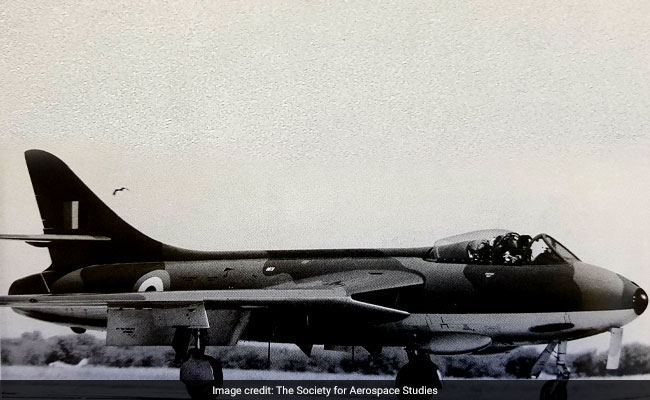
20 Squadron "Tribe twenty" led by Wing Commander Cecil Parker during the 1971 war.
Quick Take
Summary is AI generated, newsroom reviewed.
Mission could be single-most successful IAF's counter-air operation
Two veterans believe Air Headquarters needs to re-open its file
The IAF struck Murid in Pakistan during the 1971 war
In his new book, "In The Ring and On Its Feet - Pakistan Air Force in the 1971 Indo-Pak War", Pakistan's leading military aviation historian Air Commodore M Kaiser Tufail (Retd.) has stated that IAF Hunter fighter jets belonging to 20 Squadron, 'The Lightnings' of the IAF destroyed 5 PAF F-86 Sabres on the ground in Murid on December 8, 1971.
He goes on to list the identifying tail-numbers of these jets. This would make this mission the single-most successful counter-air operation in the IAF's history, meant to target enemy aircraft while they are on the ground.
As NDTV reported yesterday, never have more enemy jets been destroyed in a single IAF raid on a Pakistani airbase -- a fact that found mention in Pakistani records but has never been adequately recognised by the Indian Air Force.
Responding to the details in Tufail's book, the then Commanding Officer of the Pathankot-based 20 Squadron during the 1971 war, Air Vice Marshal Cecil Parker (Retd.) says: "In view of the admission of the loss of five Sabre aircraft (with tail numbers given) of the PAF in Murid on December 8, 1971, they must be credited to Mission 113 and be included in No 20 Squadron total toll in any official history of the IAF."
Parker is no ordinary IAF officer. Awarded the Maha Vir Chakra, the second highest military decoration in India, Parker shot down an enemy Sabre fighter, heavily damaged another one and attacked the Pakistani oil refinery at Attock in the face of intense anti-aircraft fire while leading 20 Squadron during the '71 war.
According to Parker, "My own opinion is that the Awards Committee at Air headquarters felt that too many awards were going to a single unit, ie No 20 Squadron. I may add that two-thirds of my recommendations were accepted but the one-third that wasn't, included my recommendations for Dhillon, Murlidharan and Heble."

IAF Hawker Hunter in 1971 often called "God's Own Aeroplane" by 20 Squadron, IAF
'Pointed nose' fighters in service with the PAF at the time included the French-made Mirage 3 and the US made F-104 Starfighter, arguably the most advanced fighter in the world in 1971, which Pakistan received in limited numbers from the US and Jordan 1961 onwards.
Since the Pakistani accounts do not mention the loss of either of these two types in Murid on December 8, it is quite possible that Heble had in fact struck one of the 5 F-86 Sabres which were destroyed on the ground that day. In any event, Heble never received a gallantry award for his role in 1971.
Backing Parker's belief that the IAF needs to re-open its files on the Murid operation of December 8, 1971, is former Navy Chief Admiral Arun Prakash, who was deputed to 20 Squadron during the 1971 war.
Prakash, who was awarded a Vir Chakra for gallantry during 1971, had attacked Murid a day earlier in another daring raid by 20 Squadron Hunters. Tasked with maintaining the squadron's diary, an account of day-to-day operations of the Lightnings, Admiral Prakash says, "I feel sorry that I could not notch up the five Sabres that Tufail has, so kindly granted to us 47 years on."
The IAF has not been averse to taking a re-look at the role of some of its pilots during 1971.
In 1988, 23 years after the 1965 Indo-Pak war, the IAF posthumously awarded the Maha Vir Chakra to Squadron Leader AB Devayya after an account published in John Fricker's book "Battle for Pakistan". Devayya had been engaged by a Pak F-104 Starfighter in a dogfight, but managed to hold his own despite flying an older and significantly inferior Mystere fighter. Despite being mortally wounded, Devayya managed to strike the Starfighter repeatedly with his cannon, causing it to be abandoned.
Track Latest News Live on NDTV.com and get news updates from India and around the world

